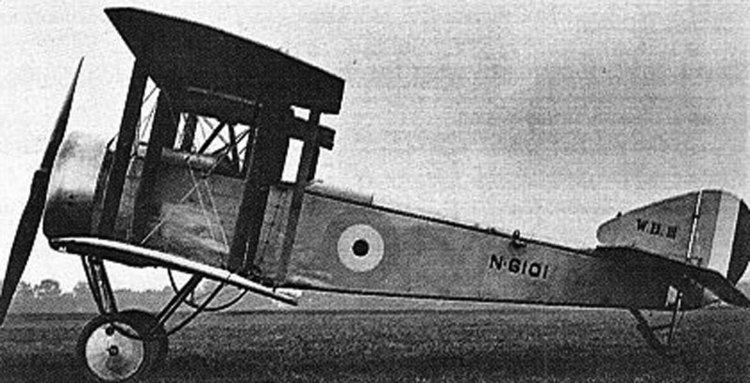Top speed 166 km/h Wingspan 7.62 m Weight 400 kg First flight 1917 | Range 275 km Length 6.17 m Engine type Le Rhône 9C | |
 | ||
The Beardmore WB.III was a British carrier-based fighter biplane of World War I. It was a development of the Sopwith Pup that Beardmore was then building under licence, but was specially adapted for shipboard use.
Contents
Design and development
It featured a redesigned wing cellule with no stagger and an extra set of struts inboard, facilitating folding for stowage, a modified fuselage that carried emergency floatation gear, and main undercarriage that could be folded for stowage on the WB.IIIF. Later examples, designated WB.IIID could jettison their undercarriage for safer water landings.
As many as one hundred were built, with small numbers deployed on various Royal Navy warships including the carriers HMS Furious, HMS Argus and seaplane tenders Nairana and Pegasus. Performance was less than the Sopwith Pup on which it had been based and it was largely superseded by the Sopwith 2F1 Ships Camel.
Operators
Specifications
Data from
General characteristics
Performance
Armament
